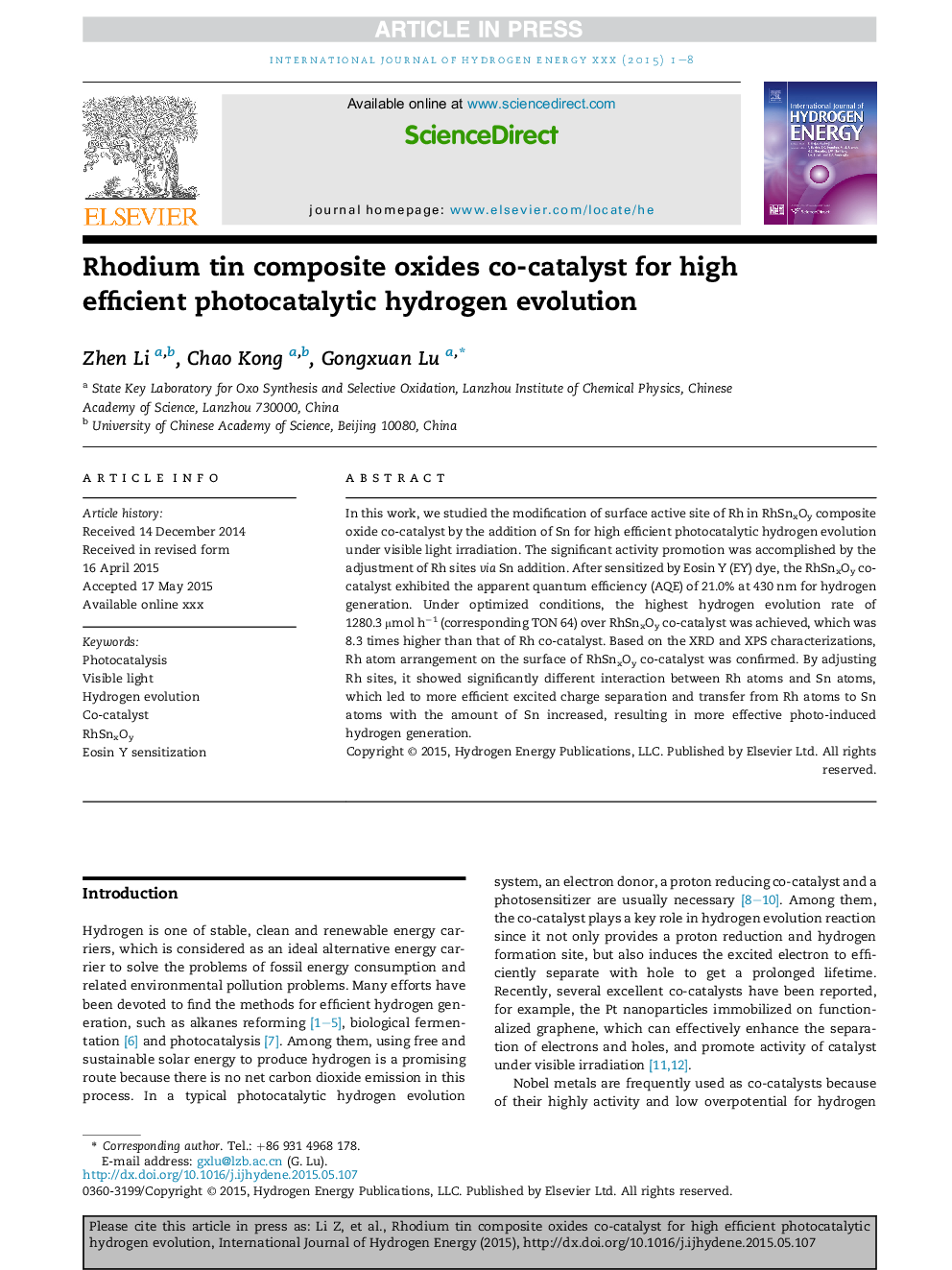| Article ID | Journal | Published Year | Pages | File Type |
|---|---|---|---|---|
| 7714992 | International Journal of Hydrogen Energy | 2015 | 8 Pages |
Abstract
Novel and stable rhodium tin composite oxides (RhSnxOy) photocatalyst exhibited higher hydrogen evolution activity than Rh alone. In this work, we studied the modification of surface active site of RhSnxOy composite oxides co-catalyst by Sn addition for high efficient photocatalytic hydrogen evolution under visible light irradiation in detail. After sensitized by Eosin Y (EY) dye, the photocatalyst exhibited the apparent quantum efficiency (AQE) of 21.0% at 430 nm for hydrogen generation. Under optimized conditions, the highest hydrogen evolution rate of 1280.3 μmol hâ1 (corresponding TON 64) was achieved, which was 8.3 times higher than that of Rh co-catalyst alone. The significant activity promotion was accomplished by the adjustment of Rh sites via Sn addition. Based on the XRD and XPS characterizations, the Rh atom arrangement on the RhSnxOy co-catalyst surface were achieved. By adjusting this interaction, more efficient the excited charge separation and transfer from Rh atom to Sn atom was fulfilled, leading to more effective photo-induced hydrogen generation.179
Related Topics
Physical Sciences and Engineering
Chemistry
Electrochemistry
Authors
Zhen Li, Chao Kong, Gongxuan Lu,
